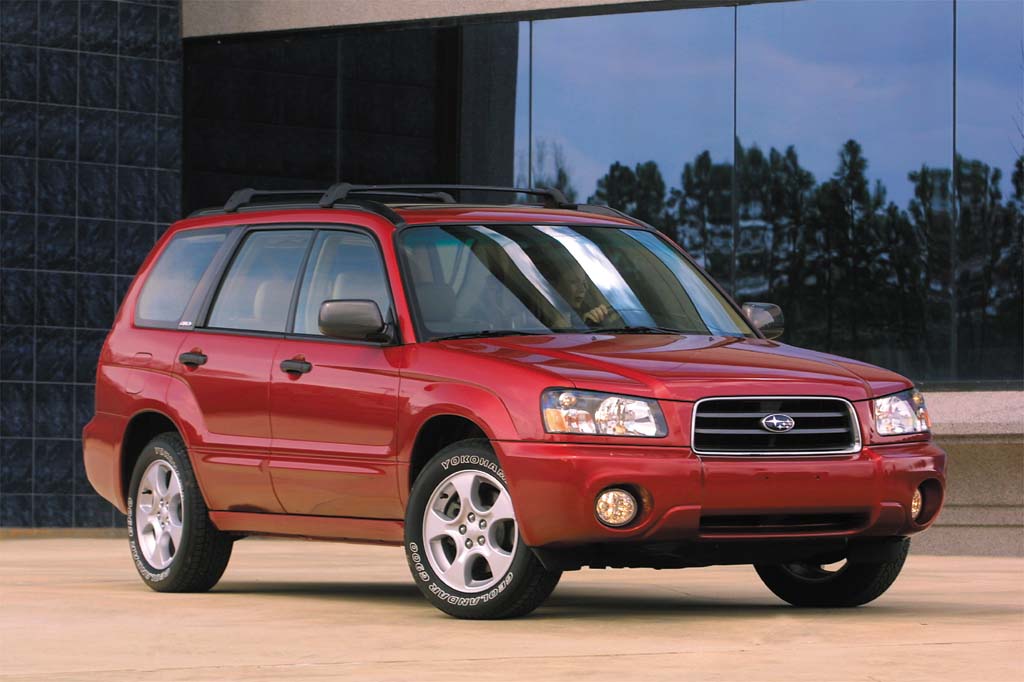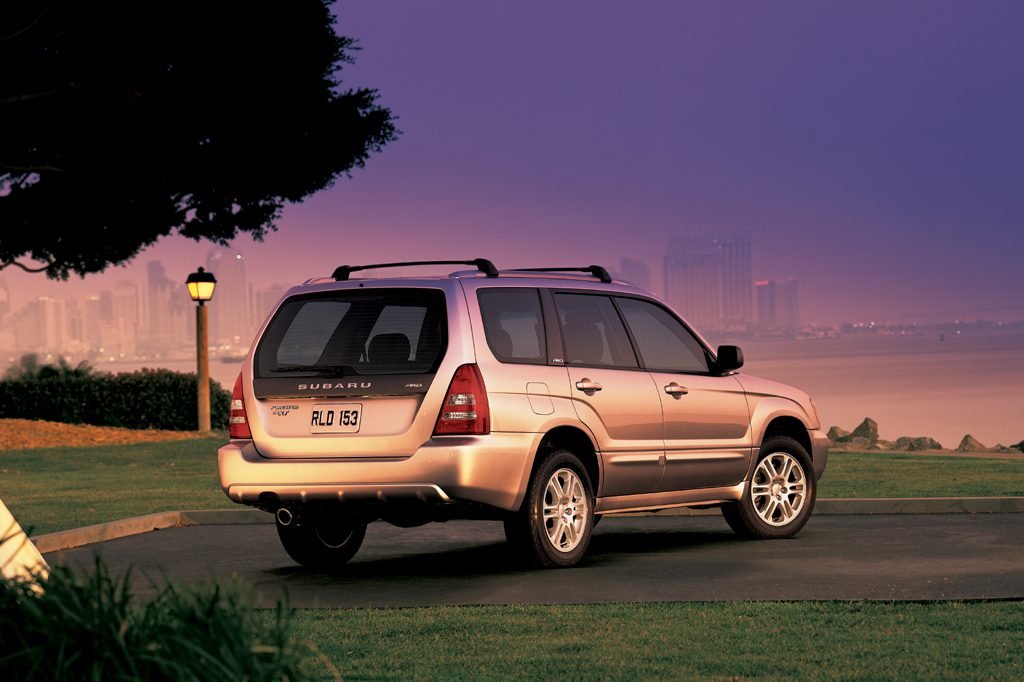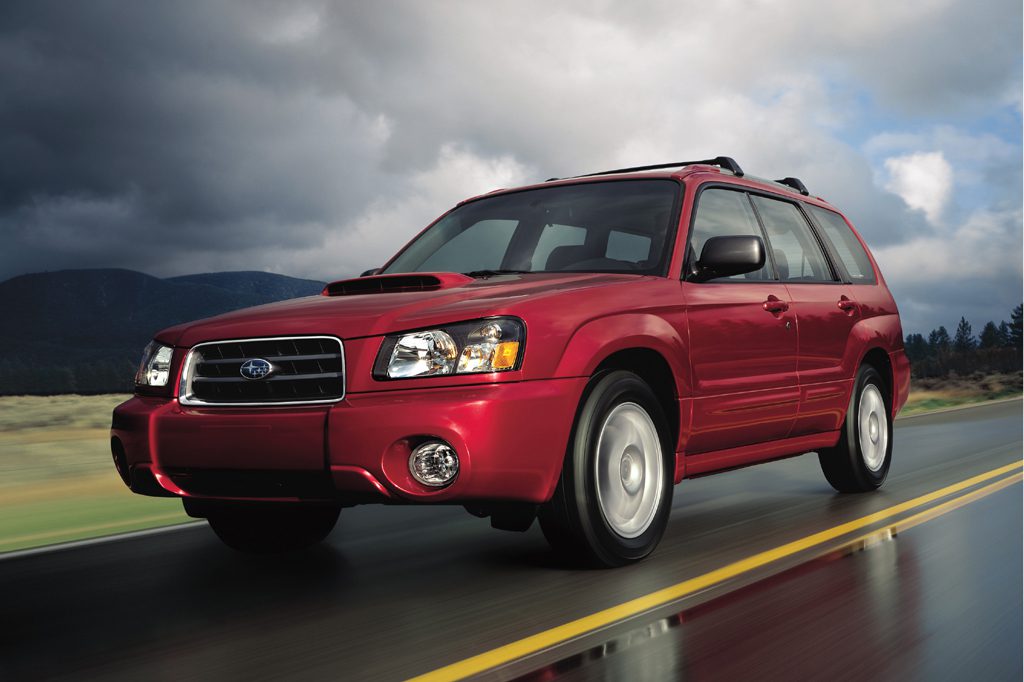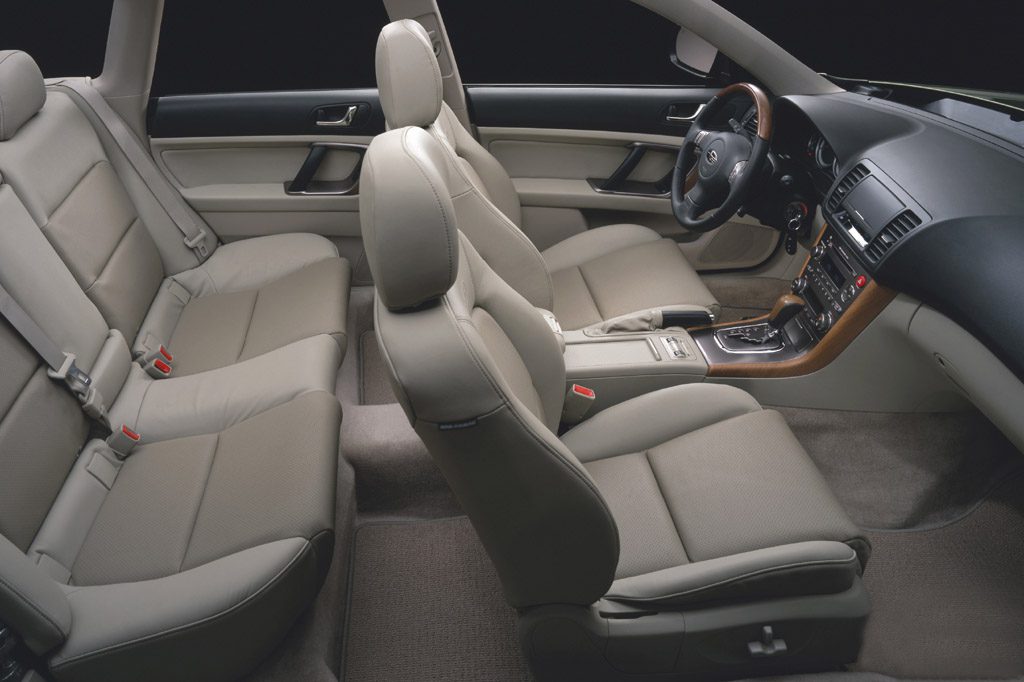| Compact SUV; Built in Japan |
|
|
| Good condition price range: $5,000 – $15,700* |

2003 Subaru Forester

2004 Subaru Forester

2005 Subaru Forester

Subaru Forester interior
| Pros: |
|
| Cons: |
|
If you can live with modest acceleration, limited towing capacity, and constrained rear-seat space, non-turbo Foresters are rational alternatives to any number of bulkier, less-efficient SUVs. Forster XTs offer a useful dose of extra power. All Foresters combine AWD security with plenty of cargo space, a stable ride, and respectable fuel economy in a pleasantly carlike package.
Overview
Redesigned as an early 2003 model, Subaru’s Forester got new styling and more leg room than its 1998-2002 predecessor, but it stayed within the compact sport-utility vehicle class. As before, the Forester was essentially a tall wagon that shared its powertrain and many underskin components with Subaru’s Impreza subcompact cars. Wheelbase was unchanged, while front and rear leg room increased fractionally and head room shrunk slightly.
Foresters came in base 2.5 X and uplevel 2.5 XS trim. Unchanged for 2003 was their horizontally-opposed 2.5-liter four-cylinder engine. Foresters came with either a manual or automatic transmission, plus all-wheel drive that lacked low-range gearing. Manual-shift models resurrected Subaru’s Hill Holder feature, designed to prevent rolling backward on inclines with the clutch pedal depressed.
Antilock brakes, again standard, were joined for 2003 by standard head-and-chest-protecting front side airbags. Both models rode on 16-inch tires. Air conditioning, power windows/locks/mirrors, tilt steering, a CD player, and remote keyless entry were standard. Leather upholstery was available only on automatic-transmission XS models, fitted with the optional Premium Package–which included a sunroof and substituted monotone lower-body trim for gray cladding.
Forester competitors included the Ford Escape, Mazda Tribute, and Honda CR-V.
Yearly Updates
| 2004 Forester Arrival of a turbo Forester highlighted changes for 2004. Foresters now came in base 2.5 X, uplevel 2.5 XS, and new 2.5 XT form with a 210-horsepower turbocharged engine. Other models had a 165-hp engine. An in-dash CD changer was now standard in XS and XT models. Leather upholstery was offered on those two versions. |
| 2005 Forester An L.L. Bean edition of the Forester debuted for 2005. An automatic transmission was standard in the new 2.5 XS L.L. Bean Edition, which featured beige leather upholstery and a self-leveling rear suspension. New eight-spoke wheels were mounted on the 2.5 XS, while the L.L. Bean had 10-spoke wheels. All models got a new three-spoke steering wheel, and all but the 2.5 X added a power driver’s seat. Unlike other models, which had contrasting-color body cladding, the 2.5 XS brandished a monotone appearance. |
| 2006 Forester More power and freshened looks marked 2006 for Subaru’s compact SUV. For ’06, the turbocharged XT added 20 hp for 230 total. The other models gained 8 hp, for 173. |
| 2007 Forester The XT got 17-inch wheels vs. the other Foresters’ 16s for 2007. All got a port for digital audio players as standard. |
| 2008 Forester The 2008 Subaru Forester lineup got equipment shuffling and trim-name changes as this compact SUV awaited a 2009 redesign. |
